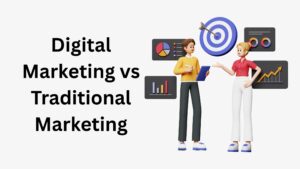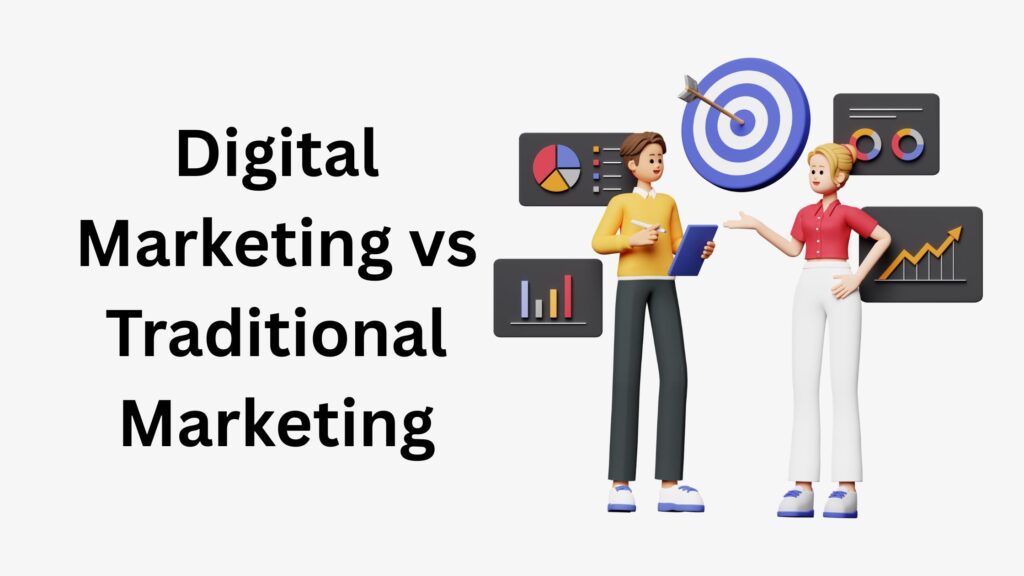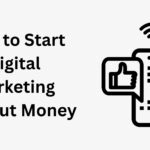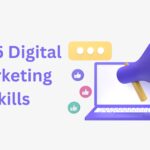Introduction
In the fast-paced world of 2025, businesses must choose the right marketing channels to succeed. As technology advances and consumer habits evolve, a clear understanding of digital marketing versus traditional marketing is essential for beginners and professionals alike.

What is Traditional Marketing?
Traditional marketing encompasses all offline advertising and promotional methods, including:
-
Print ads (newspapers, magazines, brochures)
-
TV and radio commercials
-
Billboards and hoardings
-
Direct mail and events
These strategies focus on reaching a wide, often local audience and build brand credibility through tangible presence.
What is Digital Marketing?
Digital marketing leverages the power of the internet and smart devices. Core channels include:
-
Search engine optimization (SEO)
-
Social media marketing (Facebook, Instagram, LinkedIn)
-
Content marketing (blogs, guest posts)
-
Email campaigns
-
Paid media (Google Ads, influencer marketing)
This approach enables businesses to connect with global audiences, drive conversions, and track real-time performance.
10 Key Differences: Digital vs Traditional Marketing in 2025
| Feature | Traditional Marketing | Digital Marketing |
|---|---|---|
| Medium | Offline (TV, print) | Online (web, social, email) |
| Audience Targeting | Broad, less specific | Highly targeted and personal |
| Cost Efficiency | Higher, fixed costs | Lower, scalable, flexible |
| Engagement | One-way | Real-time, interactive |
| Measurability | Hard to track | Analytics-driven, instant |
| Reach | Local/regional | Global and hyperlocal |
| Adaptability | Little, slow | Fast, data-driven |
| Content Format | Static, non-interactive | Dynamic, multimedia, shareable |
| Feedback Loop | Slow (surveys) | Instant (reviews, comments) |
| Longevity | Longer shelf-life | Ongoing, can be evergreen or viral |
Pros & Cons: Traditional vs Digital Marketing
Pros of Traditional Marketing
-
Builds strong brand trust and authority with established offline media
-
More memorable for older generations and local audiences
-
Tangible presence (billboards, print) can have longer recall
Cons of Traditional Marketing
-
Expensive set-up and limited flexibility for changes
-
Poor targeting compared to online options
-
ROI is harder to measure
Pros of Digital Marketing
-
Highly cost-effective and scalable
-
Fast-launch and easy to pause or modify campaigns
-
Real-time analytics and precise targeting based on demographics, interests, and online behavior
-
High potential for engagement, virality, and feedback
Cons of Digital Marketing
-
Ad fatigue or lack of trust for new/unfamiliar brands
-
Requires learning new tools and constant strategy adjustment
-
Can be fleeting without sustained campaigns
Listicle: Why Digital Marketing Shines in 2025
-
Instant Global Reach: Market products worldwide using platforms like Google and Facebook without geographical barriers.
-
Targeted Campaigns: Directly reach age groups, interests, and behaviors with advanced analytics and AI tools.
-
Lower Costs, Higher ROI: Set budgets as you wish, optimize in real time, and pay only for targeted impressions.
-
Real-Time Analytics: Track campaign performance instantly and make adjustments to improve results.
-
Personalized Messaging: Adapt content for different buyer personas and stages in the customer journey.
-
Faster Launch: Go from idea to advertising in hours or days, unlike weeks or months for offline campaigns.
-
Interactive Content: Leverage videos, quizzes, and polls to engage your audience.
-
SEO and Content Marketing: Attract organic traffic to your website and build authority for the long term.
-
Viral Potential: Content can quickly spread online, multiplying reach at no extra cost.
-
Continuous Learning: Get user feedback and adapt marketing strategy quickly for better campaigns.
When Traditional Marketing Still Works
-
Luxury Brands and Local Events: Physical media build prestige and trust for older demographics.
-
Products with Wide Appeal: TV ads during mass events offer unmatched reach.
-
Geographic Niches: Billboards, radio, and print work for hyperlocal targeting, especially for community trust.
-
Complementary Role: Offline and online synergy, such as QR codes in print ads or TV spots referencing websites, maximizes impact.
Which Marketing Strategy is Best for Beginners in 2025?
For beginners, digital marketing is superior due to:
-
Affordability and flexibility
-
Instant access to powerful analytics for continuous improvement
-
Platforms designed for beginners, such as easy-to-use social ads, website builders, and analytics dashboards
-
Abundant educational resources, communities, and free tools to get started
Best Practice: Start with digital marketing and supplement with traditional methods as the brand grows or when targeting specific offline audiences.
Conclusion: Blending Both for Maximum Impact
The debate between digital and traditional marketing isn’t about which is better overall—but about choosing the right mix for a brand’s goals. In 2025, digital marketing offers beginners superior cost-effectiveness, targeting, and results. However, integrating select traditional strategies enhances brand trust and offline presence for local or diverse audiences. A hybrid strategy, tailored by business size, location, and goals, will deliver the strongest results.
Frequently Asked Questions
Q1: Is digital marketing always better than traditional marketing?
A: Not always. For most beginners and modern brands, digital gives better ROI and scalable results. However, traditional methods remain powerful for local branding and older customers.
Q2: What is the most cost-effective approach for a startup?
A: Digital marketing—SEO, social ads, and content offer strong returns per investment and are easy to scale as your business grows.
Q3: Should I abandon traditional marketing altogether?
A: Not necessarily. Use traditional methods when targeting offline events, older audiences, or building local credibility while prioritizing digital channels for most campaigns.
External Links (for Authority and Further Reading)
-
Moz: Beginner’s Guide to SEO for SEO best practices
-
HubSpot: What is Digital Marketing?
-
Neil Patel: Digital Marketing Blog
-
Google: How Search Works
This article is structured for SEO, packed with beginner-friendly advice, Google-friendly formatting, and authoritative linking to help rank and perform well in 2025’s digital landscape.


